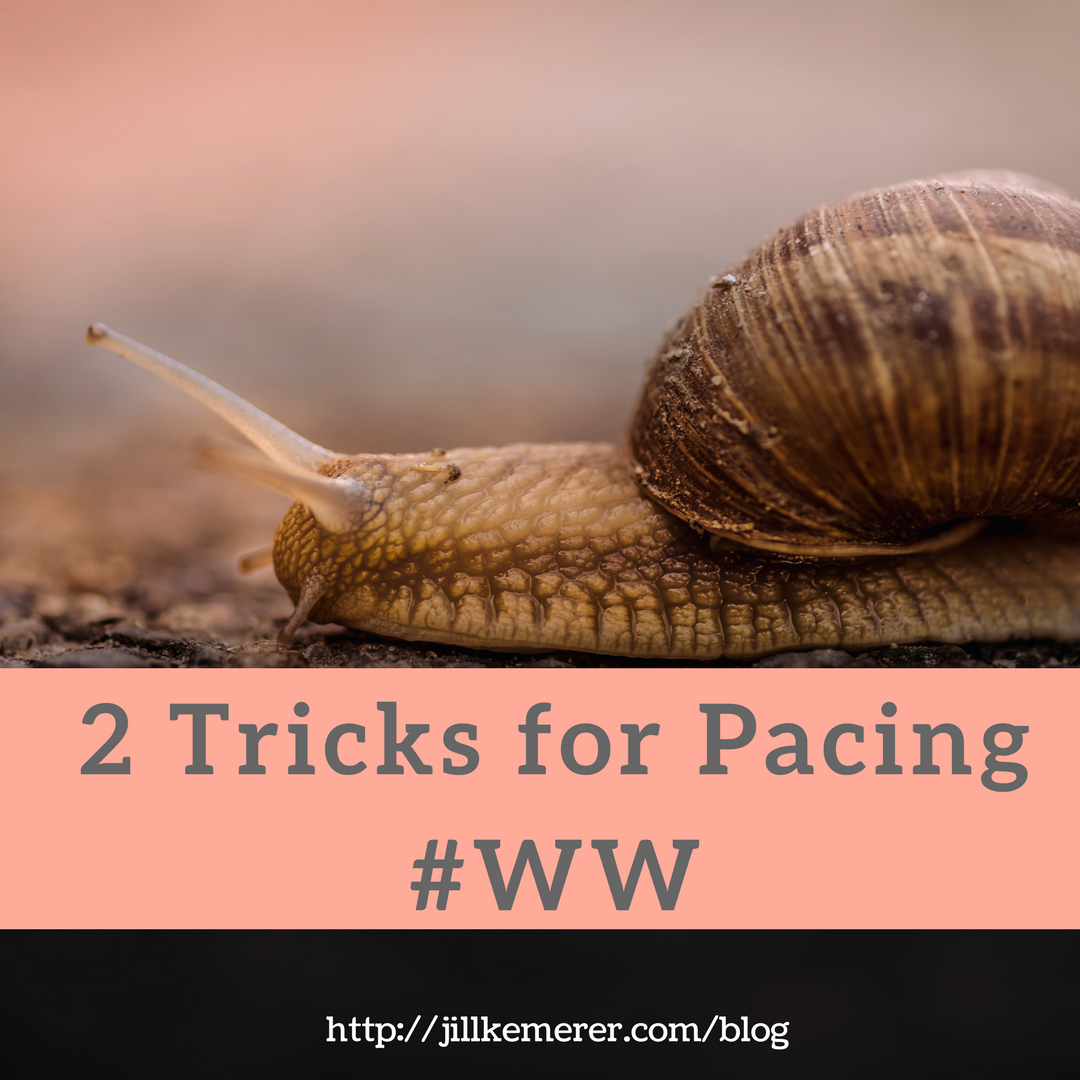My writer productivity skyrockets when I set monthly writer goals, and it’s time to share…
2 Tricks for Pacing #WW
You’re nearing the end of a writing session, and you’re in the zone. The words are hopping onto the page–it’s as if they’re writing themselves. Isn’t that the best feeling? Zone writing is fast and delicious. But it often lacks layers, and these layers affect the pace.
When I write fast, I’m typically writing action and dialogue, but scenes need more than words and actions. The reader needs the subtle clues in between to propel them to turn the page. Pacing that’s too fast will leave the reader unconnected to the characters. Pacing that’s too slow will make them stop reading the book.
Pacing isn’t easy to identify. If you want to check your manuscript for pacing, here are my top two tricks.
1. Do the sight test. Skim a few chapters (or more) of your manuscript.
Are there long paragraphs with no dialogue for pages on end?
If the scene only features one character, make sure you’re breaking up her thoughts with movement. What is she doing in this scene? Show her doing it. And make sure the actions are furthering the story. Showing her brush her teeth will not rivet the reader.
If you’re writing any genre of romance, make sure the dialogue is interspersed with action beats, internal thoughts and sensory details to help the reader flesh out what is happening and feel connected to the characters.
If the scene seems dialogue heavy, how can you dot in sensory details, reactions and thoughts to make the story come alive for the reader? Just don’t overdo it, or the dialogue will fall flat.
Here is stripped down dialogue (which can be effective in small doses).
“I can’t believe you did that.”
“Why not?” Jane said. “You drove me to it.”
“Next you’ll be telling me I drove you to steal from me, too,” Sam said.
“You said it. Not me.”
Here is fleshed out dialogue (sorry it’s cheesy!).
“I can’t believe you did that.” Sam slammed the door of his truck and stood, legs wide, facing her. How could he have ever loved this psychopath?
“Why not?” Jane got up in his face. “You drove me to it.”
“Next you’ll be telling me I drove you to steal from me, too.” Snow flurries carried the scent of winter, reminding him he had better things to do than argue with the woman responsible for his frozen heart and empty bank account.
“You said it. Not me.”
Every scene has a rhythm, whether fast or slow. But scenes also need balance. Readers get bored with pages of a character thinking about a problem. And, unless they’re reading a genre such as suspense or thriller, they get whiplash with chapter after chapter of nonstop dialogue.
2. Are your scenes starting and ending with a hook?
- When you begin and end a scene with a hook (something that entices the reader to keep reading), you automatically help the pace.
- To check for hooks, copy and paste the first line and the last line of each scene into a new document. Read through them. If you were a reader would you keep reading based on these sentences? If not, rewrite them to give them more oomph.
I still review the opening and closing lines of each scene before submitting my work. I almost always change at least three lines. It keeps me from getting lazy.
I’ve only touched on two aspects of pacing. If you’d like a more in-depth discussion, go to “7 Tools for Pacing A Novel & Keeping Your Story Moving at the Right Pace” by Courtney Carpenter at Writer’s Digest.
*
Have you ever read a book you’d describe as slow? Chime in!
Yesterday I was the guest blogger on Seekerville. Check out “10 Ways to Balance Your Writing Life” (Linked) to learn how I’ve lost weight, increased my writing output and reclaimed time for things I enjoy!
Happy November!!






Jill, thank you for your great message. I am learning so many wonderful things about writing from you. 🙂
I’m so glad you stopped by, Melissa! That’s the great thing about writers–they share their tricks! I’ve learned a ton from other writers over the years, and I continue to learn from writers today!